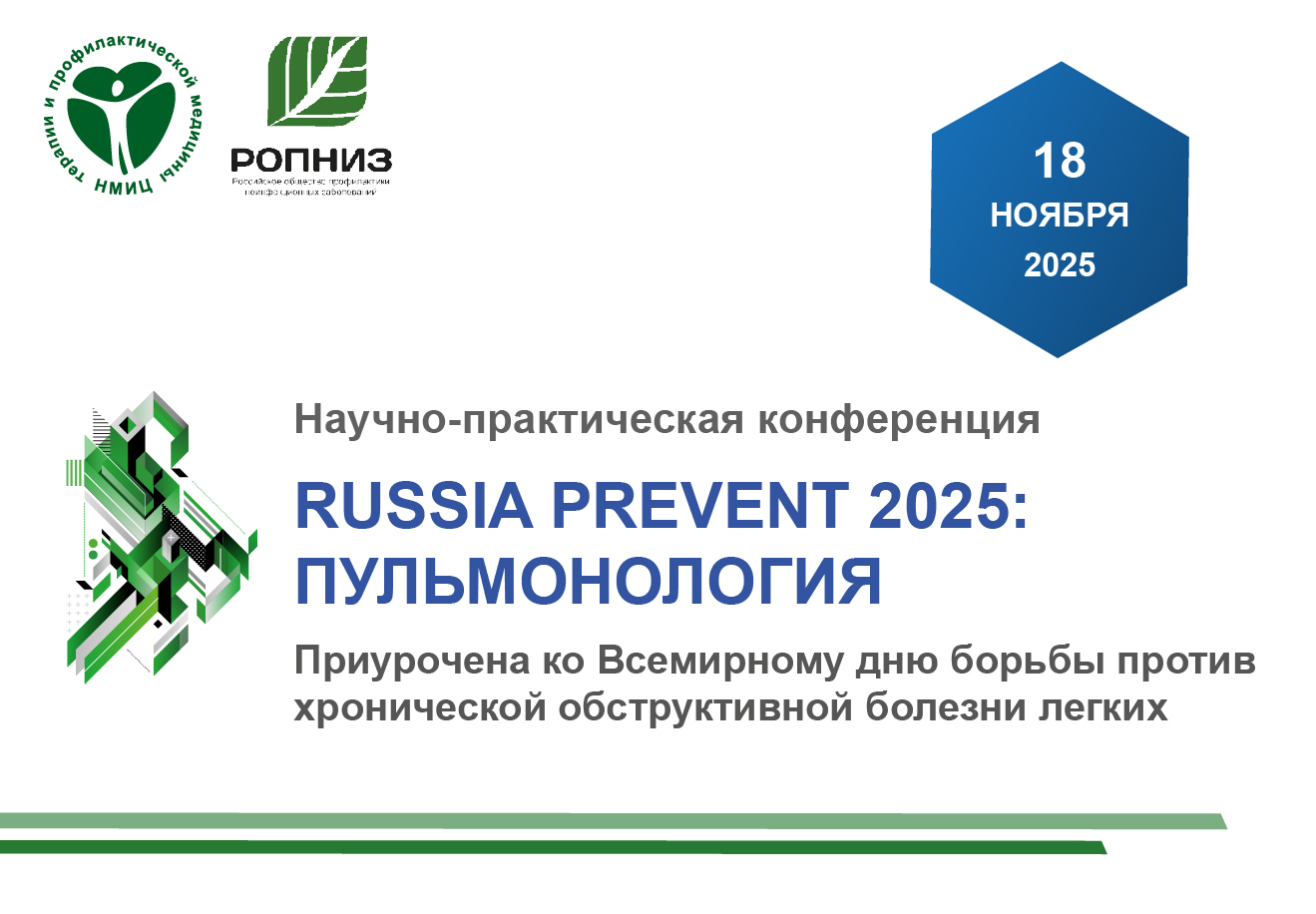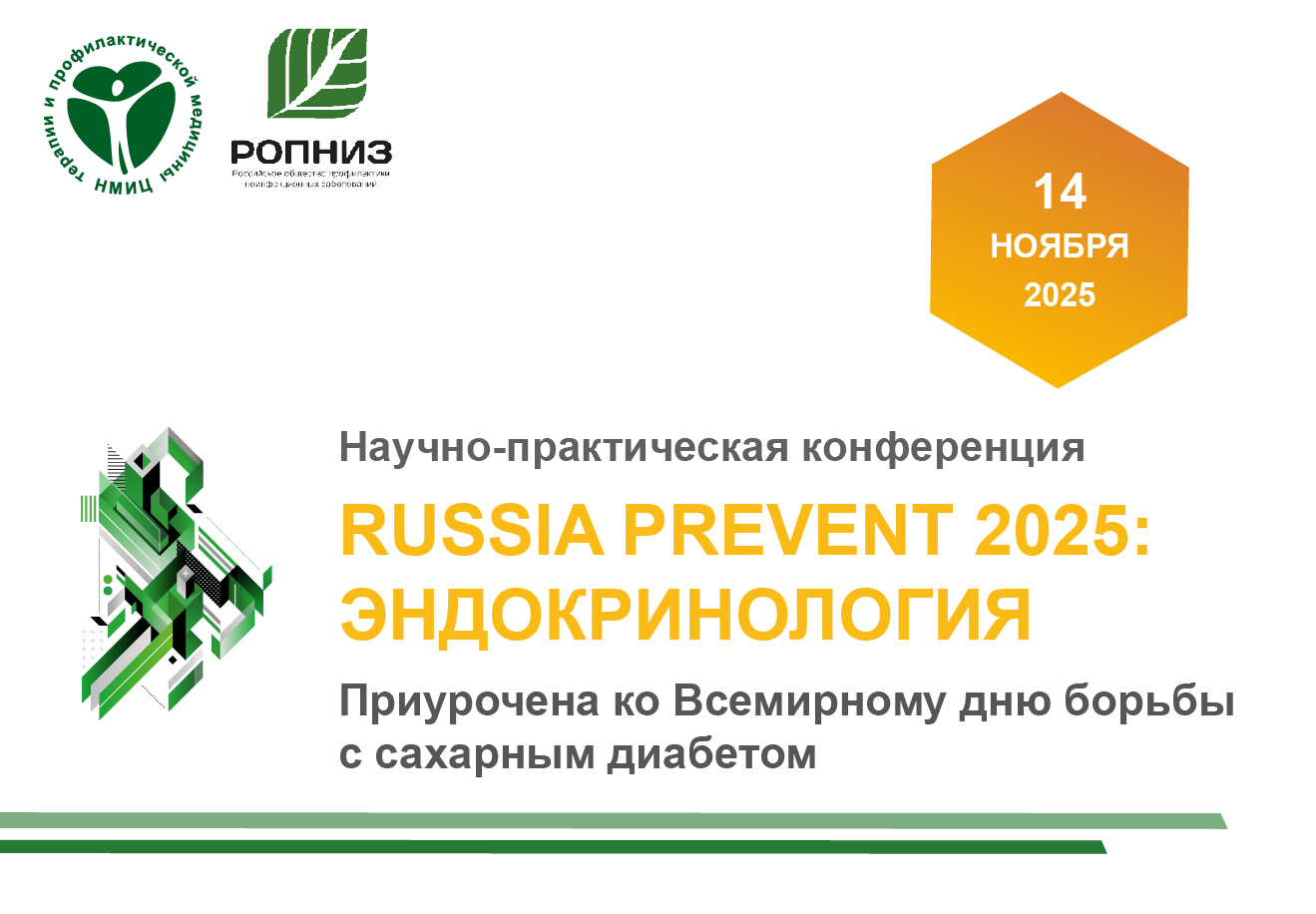Dehydroepiandrosterone and cognitive impairment and impact in cardiovascular mortality among men and women 55 years and older
https://doi.org/10.20996/1819-6446-2024-3122
EDN: PRIKMX
Abstract
Aim. To evaluate possible associations between low dehydroepiandrosterone sulfate (DHEAS) levels and cognitive impairment and their impact in cardiovascular mortality among the population 55 years and older.
Material and methods. The present study was carried out as part of the prospective cohort survey "Stress, aging and health" in Russia. 1876 men and women aged 55 years and older were examined. Cognitive function was assessed at baseline and after 3 years using the Mini- Mental State Examination scale; a decrease in cognitive function corresponded to a sum of scores less than 24 out of 30 points. DHEAS levels were assessed in serum samples. All participants were ranked according to quintiles of DHEAS levels (>2.61 μmol, 2.34-2.61 μmol/L, 1.60-2.33 μmol/L, 1.05-1.59 μmol/L, <1.05 μmol/L). Mortality was estimated from the permanent death registry using standard methods. During the follow-up period (median 12 years), 315 deaths from CVD were registered.
Results. A total of 1876 participants aged 55 years and older (48% men and 52% women) were included in the study. The frequency of cognitive function, both baseline and after three years in men was almost independent of the DHEAS level, while in women, low levels of cognitive function were predominant in the first quintile of DHEAS. With decreasing DHEAS levels, cognitive function decreased significantly in women (1 quintile vs. 5 quintiles of DHEAS), but no such associations were found in men. In a population of men 55 years and older, both cognitive impairment (OR: 2.08; 95% CI 1.49 to 2.92) and low DHEAS levels (OR: 1.60; 95% CI 1.05 to 2.44) were significantly associated with cardiovascular mortality. Similar results were obtained in the cohort of women — the risk of cardiovascular mortality was increased in the presence of cognitive impairment by 2.3-fold (p<0.05), low DHEAS by 1.6-fold (p<0.05), respectively. The simultaneous presence of these disorders was significantly associated with CVD mortality, but only in women.
Conclusion. Based on the results of the present study, an association between baseline DHEAS levels and baseline cognitive impairment was found, but only in a female population. A prospective follow-up assessment of cognitive function failed to support the hypothesis that low DHEAS levels may predict greater decline in cognitive function. However, a significant cumulative contribution of cognitive impairment combined with low DHEAS concentration to cardiovascular mortality was observed at 12-year follow-up, but only in women.
Keywords
About the Authors
S. A. ShalnovaRussian Federation
Svetlana A. Shalnova
Moscow
N. A. Imaeva
Russian Federation
Natalia A. Imaeva
Moscow
A. E. Imaeva
Russian Federation
Asiia E. Imaeva
Moscow
V. A. Kutsenko
Russian Federation
Vladimir A. Kutsenko
Moscow
Yu. A. Balanova
Russian Federation
Yulia A. Balanova
Moscow
A. V. Kapustina
Russian Federation
Anna V. Kapustina
Moscow
O. M. Drapkina
Russian Federation
Oksana M. Drapkina
Moscow
References
1. Savineau JP, Marthan R, Dumas de la Roque E. Role of DHEA in cardiovascular diseases. Biochem Pharmacol. 2013;85(6):718-26. DOI:10.1016/j.bcp.2012.12.004.
2. Samaras N, Samaras D, Frangos E, et al. A review of age-related dehydroepiandrosterone decline and its association with well-known geriatric syndromes: is treatment beneficial? Rejuvenation Res. 2013;16(4):285-94. DOI:10.1089/rej.2013.1425.
3. GBD 2019 Dementia Forecasting Collaborators. Estimation of the global prevalence of dementia in 2019 and forecasted prevalence in 2050: an analysis for the Global Burden of Disease Study 2019. Lancet Public Health. 2022;7(2):e105-e125. DOI:10.1016/S2468-2667(21)00249-8.
4. Wolf OT, Kirschbaum C. Actions of dehydroepiandrosterone and its sulfate in the central nervous system: effects on cognition and emotion in animals and humans. Brain Res Brain Res Rev. 1999;30(3):264-88. DOI:10.1016/s0165-0173(99)00021-1.
5. Pan X, Wu X, Kaminga AC, et al. Dehydroepiandrosterone and Dehydroepiandrosterone Sulfate in Alzheimer’s Disease: A Systematic Review and Meta-Analysis. Front. Aging Neurosci. 2019;11:61. DOI:10.3389/fnagi.2019.00061.
6. de Menezes KJ, Peixoto C, Nardi AE, et al. Dehydroepiandrosterone, Its Sulfate and Cognitive Functions. Clin Pract Epidemiol Ment Health. 2016;12:24-37. DOI:10.2174/1745017901612010024.
7. Kritz-Silverstein D, von Mühlen D, Laughlin GA, Bettencourt R. Effects of dehy droepiandrosterone supplementation on cognitive function and quality of life: the DHEA and Well-Ness (DAWN) Trial. J Am Geriatr Soc. 2008;56(7):1292-8. DOI:10.1111/j.1532-5415.2008.01768.x.
8. Valenti G, Ferrucci L, Lauretani F, et al. Dehydroepiandrosterone sulfate and cognitive function in the elderly: The InCHIANTI Study. J Endocrinol Invest. 2009;32(9):766-72. DOI:10.1007/BF03346534.
9. Herrington DM. Dehydroepiandrosterone and coronary atherosclerosis. Ann N Y Acad Sci. 1995;774:271-80. DOI:10.1111/j.1749-6632.1995.tb17387.x-i1.
10. Yoshida S, Aihara K, Azuma H, et al. Dehydroepiandrosterone sulfate is inversely associated with sex-dependent diverse carotid atherosclerosis regardless of endothelial function. Atherosclerosis. 2010;212(1):310-5. DOI:10.1016/j.atherosclerosis.2010.05.011.
11. Wu TT, Gao Y, Zheng YY, et al. Association of endogenous DHEA/DHEAS with coronary heart disease: A systematic review and meta-analysis. Clin Exp Pharmacol Physiol. 2019;46(11):984-94. DOI:10.1111/1440-1681.13146.
12. Shkolnikova M, Shalnova S, Shkolnikov VM, et al. Biological mechanisms of disease and death in Moscow: rationale and design of the survey on Stress Aging and Health in Russia (SAHR). BMC Public Health. 2009;9:293. DOI:10.1186/1471-2458-9-293.
13. Shalnova SA, Deev AD, Metelskaya VA, et al. Does the low level of dehydroepiandrosterone sulfate (dhea-s) independently influence risk of death at age 55 years and older? Russian Journal of Cardiology. 2017;(6):92-9. (In Russ.) DOI:10.15829/1560-4071-2017-6-92-99.
14. Glei DA, Goldman N, Weinstein M, Liu IW. Dehydroepiandrosterone sulfate (DHEAS) and health: does the relationship differ by sex? Exp Gerontol. 2004;39(3):321-31. DOI:10.1016/j.exger.2003.11.003.
15. Davis SR, Shah SM, McKenzie DP, et al. Dehydroepiandrosterone sulfate levels are associated with more favorable cognitive function in women. J Clin Endocrinol Metab. 2008; 93(3):801-8. DOI:10.1210/jc.2007-2128.
16. Fonda SJ, Bertrand R, O’Donnell A, et al. Age, hormones, and cognitive functioning among middle-aged and elderly men: cross-sectional evidence from the Massachusetts Male Aging Study. J Gerontol A Biol Sci Med Sci. 2005;60(3):385-90. DOI:10.1093/gerona/60.3.385.
17. Elpers AL, Steptoe A. Associations between dehydroepiandrosterone sulphate (DHEAS) and cognitive function in 5,061 older men and women in the English Longitudinal Study of Ageing. Psychoneuroendocrinology. 2020;117:104702. DOI:10.1016/j.psyneuen.2020.104702.
18. Berr C, Lafont S, Debuire B, et al. Relationships of dehydroepiandrosterone sulfate in the elderly with functional, psychological, and mental status, and short-term mortality: a French community-based study. Proc Natl Acad Sci USA. 1996;93(23):13410-5. DOI:10.1073/pnas.93.23.13410.
19. Barrett-Connor E, Edelstein SL. A prospective study of dehydroepiandrosterone sulfate and cognitive function in an older population: the Rancho Bernardo Study. J Am Geriatr Soc. 1994;42(4):420-3. DOI:10.1111/j.1532-5415.1994.tb07491.x.
20. Maninger N, Wolkowitz OM, Reus VI, et al. Neurobiological and neuropsychiatric effects of dehydroepiandrosterone (DHEA) and DHEA sulfate (DHEAS). Front Neuroendocrinol. 2009;30(1):65-91. DOI:10.1016/j.yfrne.2008.11.002.
21. Charalampopoulos I, Remboutsika E, Margioris AN, Gravanis A. Neurosteroids as modulators of neurogenesis and neuronal survival. Trends Endocrinol Metab. 2008;19(8):300-7. DOI:10.1016/j.tem.2008.07.004.
22. Moser U, Wadsak W, Spindelegger C, et al. Hypothalamic serotonin-1A receptor binding measured by PET predicts the plasma level of dehydroepiandrosterone sulfate in healthy women. Neurosci Lett. 2010;476(3):161-5. DOI:10.1016/j.neulet.2010.04.020.
23. Fang Z, Zhang Q. Association between cognitive impairment and cardiovascular mortality in mature and older adults: A meta-analysis. Exp Gerontol. 2024;192:112440. DOI:10.1016/j.exger.2024.112440.
24. Badji A, Youwakim J, Cooper A, et al. Vascular cognitive impairment — Past, present, and future challenges. Ageing Res Rev. 2023;90:102042. DOI:10.1016/j.arr.2023.102042.
25. Katusic ZS, d’Uscio LV, He T. Emerging Roles of Endothelial Nitric Oxide in Preservation of Cognitive Health. Stroke. 2023;54(3):686-96. DOI:10.1161/STROKEAHA.122.041444.
26. van Nieuwkerk AC, Delewi R, Wolters FJ, et al; Heart-Brain Connection Consortium. Cognitive Impairment in Patients With Cardiac Disease: Implications for Clinical Practice. Stroke. 2023;54(8):2181-91. DOI:10.1161/STROKEAHA.123.040499.
27. Ohlsson C, Labrie F, Barrett-Connor E, et al. Low serum levels of dehydroepiandrosterone sulfate predict all-cause and cardiovascular mortality in elderly Swedish men. J Clin Endocrinol Metab. 2010;95(9):4406-14. DOI:10.1210/jc.2010-0760.
28. Shufelt C, Bretsky P, Almeida CM, et al. DHEA-S levels and cardiovascular disease mortality in postmenopausal women: results from the National Institutes of Health--National Heart, Lung, and Blood Institute (NHLBI)-sponsored Women’s Ischemia Syndrome Evaluation (WISE). J Clin Endocrinol Metab. 2010;95(11):4985-92. DOI:10.1210/jc.2010-0143.
29. Sharaf BL, Pepine CJ, Kerensky RA, et al; WISE Study Group. Detailed angiographic analysis of women with suspected ischemic chest pain (pilot phase data from the NHLBI-sponsored Women’s Ischemia Syndrome Evaluation [WISE] Study Angiographic Core Laboratory). Am J Cardiol. 2001;87(8):937-41; A3. DOI:10.1016/s0002-9149(01)01424-2.
30. Ostrowska Z, Zwirska-Korczala K, Pardela M, et al. Circadian variations of androstenedione, dehydroepiandrosterone sulfate and free testosterone in obese women with menstrual disturbances. Endocr Regul. 1998;32(4):169-176.
31. Ghadir S, Azziz R. Reproducibility of the adrenal androgen response to adrenocorticotropic hormone stimulation. Fertil Steril. 2006;86(2):484-6. DOI:10.1016/j.fertnstert.2006.01.018.
Supplementary files
Review
For citations:
Shalnova S.A., Imaeva N.A., Imaeva A.E., Kutsenko V.A., Balanova Yu.A., Kapustina A.V., Drapkina O.M. Dehydroepiandrosterone and cognitive impairment and impact in cardiovascular mortality among men and women 55 years and older. Rational Pharmacotherapy in Cardiology. 2024;20(6):592-599. (In Russ.) https://doi.org/10.20996/1819-6446-2024-3122. EDN: PRIKMX
















































